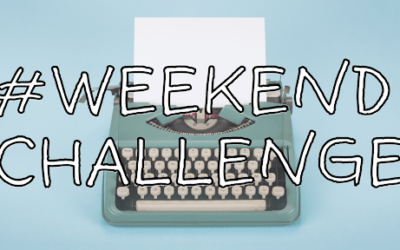
Essential Tips for Structuring Children's Fiction
Think of structure like the foundations of a house. The walls could be the plot, holding everything up; the decorations are the settings; the furnishings are the characters.
This house can be strong, engaging and interesting to look at. But, if the foundation isn’t there, the whole thing falls down.
Writers talk a lot about plot and characters, themes and ideas, but they don’t talk as much about structure. A story can have an amazing cast of characters or fantastic plot, but it still falls apart because the structure isn’t there. Read on to find out how you can structure your children’s fiction like a pro.
Plot vs. Structure
Some writers use plot and structure as synonyms, but the two are very different things; plot is what happens in your story, but structure is how the plot is ordered.
For example, the plot of a traditional story like Hansel and Gretel will always be the same; two siblings are lost in the woods, enticed by an evil witch who imprisons them, but they use their cleverness to escape and live happily ever after. That’s the plot.
But, your story could begin as Hansel and Gretel are captured; the viewpoints could alternate between Gretel and the witch; it could even be told through a series of letters or diary entries. That’s structure.
So, if plot is what happens, structure is how the reader is told.
Elements of Structure
No matter how you decide to tell your story, the most basic structure for any story is using paragraphs, chapters and scenes.
Paragraphs: Are the smallest building blocks, made up of a few sentences. They usually convey a single idea, and you’ll start a new one whenever a new idea is introduced, the setting changes or a character speaks.
Scenes: Are when the action occurs in one time and one place, so they could be made up of a single paragraph or lots of them. As soon as your narrative moves to a different location or focus, it’s changed scenes.
Chapters: Are made up of lots of scenes that bring the story to the same goal.
Each of these elements work in a story to drive it forward and bring the story to its climax.
Know your Audience!
No matter what age group you’re writing for, structure is an important thing to pin down. Every audience will have different needs for the way their stories are told.
For younger readers, picture books are made up of a few short scenes that are dictated by how the story looks on the page. As young readers become more confident and begin reading independently, beginner chapter books have shorter chapters to break up the story. This emphases the action of the plot and breaks the story into bitesize chunks.
Middle Grade fiction books are longer still with more developed chapters, but Young Adult Fiction allows for far more nuance and artful structure. It can have sub-plots, multiple character arcs and timelines too.
But on the other hand, short stories relies on engaging scenes and interesting plots to grip readers.
When to start a new chapter
Of all the functional ways of structuring your story, chapters are the most important to master. While a short story is read all in one go, chapters divide up the narrative and fulfil very important roles. For Middle Grade and Young Adult Fiction in particular, there are three times where you can start a new chapter:
When the action naturally comes to a close: There isn’t a set length for each chapter, so if your story is ready for its next stage after 6 pages, start a new chapter. Don’t string out your scenes for the sake of a word count.
When the story is at its most tense: Your princess is escaping the castle, guards hot on her heels and she barrels into a secret passageway and finds that it’s blocked. What happens next? You start a new chapter! High moments of tension are great for chapter breaks because they leave the reader with questions that make them want to carry on. Be careful not to use this technique too frequently as the novelty will soon wear off.
When the action of the story changes: Some chapters will begin with a new setting, a new set of characters or even a new time period. Beginning a new chapter gives the reader a change to get acquainted with the developing story.
For any writer, chapters are also ways to keep track of what’s happening as you draft. Writing any novel is a long and complicated process, with lots of plot threads, characters and settings that need to be interwoven and tied up for it all to make sense.
Chapters are a way to balance the pace of your story. In the same way that longer sentences feel slower, and vice versa with shorter ones, the length of your chapters can be used strategically.
Try out different chapter lengths in the drafting process to find what suits you.
While a short story is read all in one go, chapters divide up the narrative and fulfil very important roles
To sum up…
In the drafting stages, structuring your plot into clear chapters allows you to plan how you’re going to tackle what comes up next, which ultimately makes for a more enriching and exciting read.
No matter how you tackle your story, every story needs a good structure. Use our techniques and you’ll guarantee a reader won’t be able to put your book down!
Read our Latest Articles for Writers
The Writer’s Guide to Social Media
Today we are talking about a topic that intimidates many writers and illustrators, social media. Good news! It doesn’t have to. The key is to choose the platform that is most enjoyable to you. The one you don’t mind spending time on and fosters authentic...
How to Win a #WeekendChallenge
Thank goodness it’s Friday, WA Community, and not just because it’s the start of the weekend. Friday’s have us happy dancing because that’s when we announce the new #WeekendChallenge prompt. The #WeekendChallenge is an opportunity to write a 100-word entry based on a...
Submitting Your Story: 7 Tips to Survive the Query Trenches
You’ve typed “the end”, received feedback, and revised your story. Congratulations, you are ready to enter the Query trenches! Whether you decide to query an agent or an editor is a personal preference but these seven survival tips will apply to both query routes....
Subscribe to our mailing list
Be the first to find our about our newest blogs, offers and news from Write Academy!





